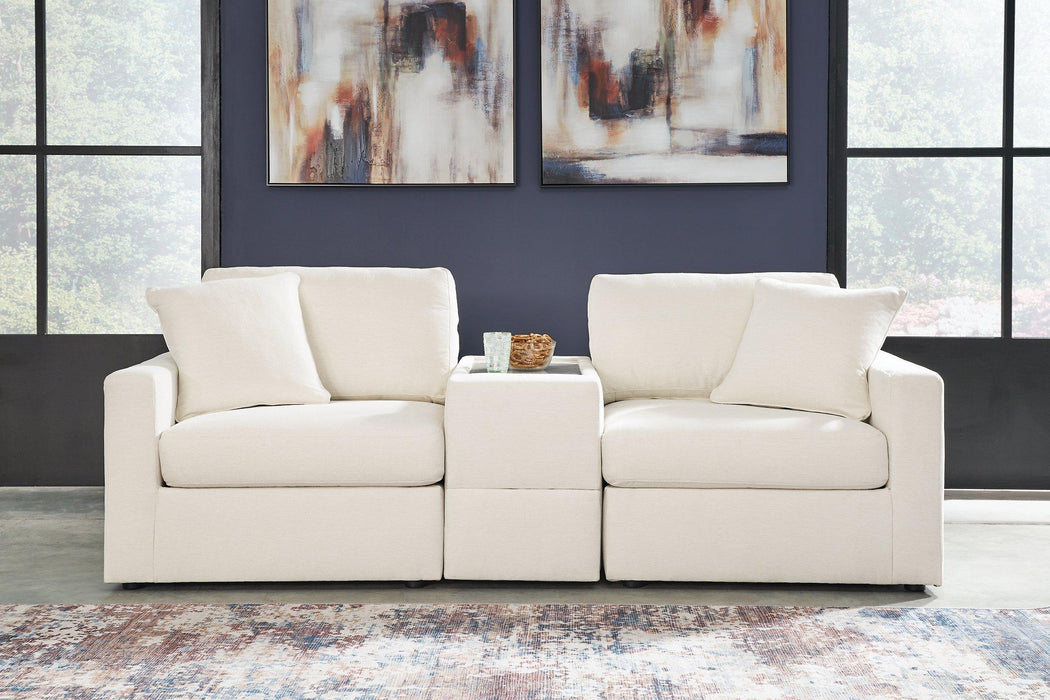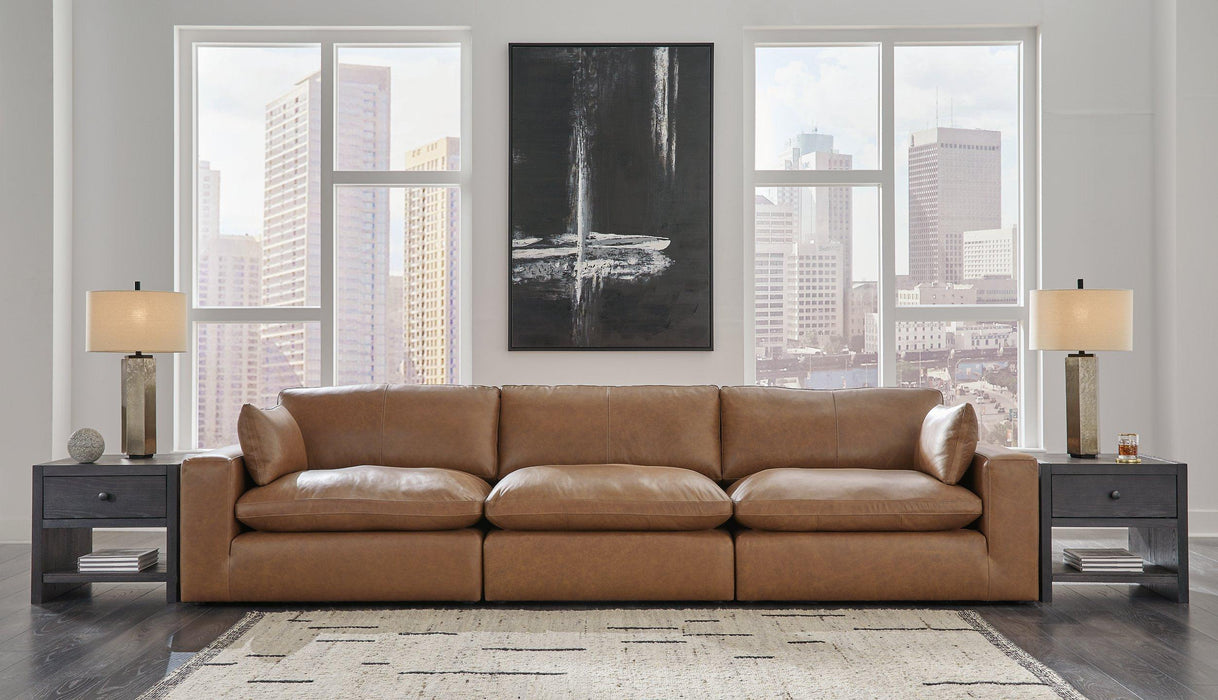Understanding the Pros and Cons of Owning a Sectional Sofa: A Balanced Guide

Is a sectional sofa the right choice for your home? In this article, we examine the pros and cons of owning a sectional sofa to help you decide. We’ll look at seating benefits, customization, size, flexibility, and maintenance concerns.
Key Takeaways
-
Sectional sofas provide ample seating and customization, making them great for families and entertaining.
-
However, their large size can overwhelm small spaces and limit layout flexibility, making movement tricky.
-
While they are stylish and durable, sectional sofas usually come at a higher price point and require more maintenance than traditional sofas.
Benefits of Owning a Sectional Sofa
Sectional sofas offer numerous advantages that can enhance both the functionality and style of your living room. From providing ample seating for family and guests to offering customizable options and boasting modern aesthetic appeal, sectional sofas are a versatile choice for any home.
Ample Seating for Family and Guests
Sectional sofas provide more seating space compared to traditional sofas, making them ideal for large families or frequent hosts. Hosting a movie night while watching movies becomes easier when everyone can fit comfortably on the same piece of furniture, enhancing the sense of togetherness. L-shaped sectional and U-shaped sectionals offer extensive seating possibilities suitable for accommodating multiple people, ensuring that no one is left out.
They can seat multiple people comfortably fit, making them perfect for gatherings in a family space. Ample seating options allow you to host friends without worrying about running out of seats, providing more room for an extra seat or a corner seat at the table in the great room with comfy chairs.
Designed to make the most of available space, sectional sofas maximize seating area without sacrificing comfort. In both great rooms and intimate family spaces, sectionals provide the extra seating needed to keep everyone happy.
Customization Options
Interchangeable pieces in sectional sofas offer several advantages:
-
Allow for tailored arrangements to fit unique living spaces.
-
Support various configurations, making adaptation to different spaces easy.
-
Enable customization to suit either a formal living room or a cozy family room.
Sectionals can be tailored in size, shape, and fabric for a personalized fit in any room. This flexibility ensures a perfect match for both decor and functional requirements. With various options, you can create a seating arrangement that complements your lifestyle and enhances your living space, making it ideal for most sectionals.
Modern Aesthetic Appeal
Contemporary designs in sectional sofas can significantly elevate the style of your living space. Sleek lines and modern materials make them a stylish centerpiece in any room. A sectional can complement your decor and act as a central decorative element, whether aiming for a cozy or sophisticated look.
Contemporary designs make sectional sofas a stylish focal point in a living room. They enhance overall decor, making them attractive for homeowners looking to update interiors. A sectional creates a visually appealing seating area that draws attention and adds elegance to your home.
Drawbacks of Owning a Sectional Sofa
Despite their benefits, sectional sofas have several disadvantages that potential buyers should consider. These drawbacks can impact room layout, flexibility, and budget, so weighing pros and cons is important before purchasing.
Large Size and Space Requirements
Typically large, sectional sofas may not fit well in small living rooms. Their size can make the room feel cramped and overwhelmed. In smaller areas, they can dominate the space, leading to a feeling of overcrowding. This is particularly problematic in homes with limited floor space, as a large sectional may restrict movement and make the room feel less open.
Their bulkiness can restrict movement flow within the living space. In an open floor plan, a large sectional can impede traffic flow and complicate navigation. In small living rooms or family spaces with limited space, a sectional sofa might not be the best option.
Limited Flexibility in Room Layout
The fixed shape of sectional sofas can make it cumbersome to change arrangements, limiting flexibility. Unlike modular sofas, sectional sofas often restrict furniture arrangement options, reducing versatility. In small living areas, they may dominate the space, leaving less room for essential furnishings and reducing overall comfort.
In small or formal living rooms, a sectional sofa’s shape and size can make it challenging to find a good layout in a small room. This leads to less flexibility in arranging furniture, making it harder to create a comfortable sofa and functional seating area.
If you value changing your room’s layout frequently, a sectional sofa might not be the best choice.
Higher Cost Compared to Traditional Sofas
Sectional sofas are generally more expensive than traditional sofas. Their larger size and complex design often come with a premium price tag, reflecting the additional materials and craftsmanship required.
The higher upfront cost can be a significant drawback, especially compared to a regular sofa or a combination of a couch and loveseat.
Maintenance and Cleaning Challenges
Maintaining a sectional sofa requires more effort due to its numerous components and larger size. The size and complexity of sectional sofas result in a greater need for regular upkeep and cleaning.
These factors lead to an overall increased effort for cleaning and maintaining sectional sofas, which makes more sense compared to simpler furniture designs.
Difficult to Clean Crevices and Cushions
Multiple cushions and sections can hold onto dirt and allergens, making sectional sofas harder to clean. Their design creates areas where dirt and debris can accumulate, necessitating thorough cleaning. Regular vacuuming is essential to keep the crevices and cushions free of dust and pet hair.
Numerous nooks and crannies can make cleaning sectional sofas a daunting task. Unlike traditional sofas with fewer crevices, sectional sofas require more effort to ensure all areas are clean. With pets or small children, maintaining a sectional sofa requires more frequent and thorough cleaning to keep it looking its best.
Varying Fabric Care Requirements
Different upholstery materials may need unique cleaning methods, complicating sectional sofa maintenance. Each fabric type has unique cleaning needs, necessitating specific care instructions to avoid damage. This makes maintenance more challenging, as you’ll need to be mindful of the appropriate cleaning products and techniques for each material.
Certain fabrics can be prone to staining, requiring careful consideration of cleaning products. Some materials may require special cleaning products, increasing the complexity of maintenance. If you prefer low-maintenance furniture, the varying fabric care requirements of sectional sofas can be a significant drawback.
Impact on Room Design and Traffic Flow
Sectional sofas can serve as a central feature in your living area, enhancing overall decor. However, their expansive nature can limit room arrangement options and make spaces feel less open, especially if you consider a big sectional corner piece.
A bulky sectional can hinder movement within a room, dictating predetermined pathways and potentially restricting traffic flow in open spaces and against the walls.
Dominating the Room's Aesthetics
Sectional sofas often serve as the central feature of a room, drawing attention away from other decorative elements. A large sectional can overshadow other decor elements, like wall art and architectural details. Large pieces of furniture can distract from other important design features, such as architectural details and artwork.
They can dominate the room and restrict furniture placement. In small living rooms or spaces with limited floor space, a sectional sofa might make the room feel cramped and less open. In larger rooms, a sectional can still dominate the space, making it challenging to incorporate additional furniture or decor elements without feeling cluttered.
Restricting Movement and Traffic Flow
The expansive size of a sectional can obstruct natural pathways in a room, complicating movement, especially in smaller spaces. The large size of sectional sofas can create obstacles in open areas, complicating movement and access. In smaller rooms, sectional sofas can restrict movement and reduce the effectiveness of room layout.
Due to their size, sectional sofas can create restricted pathways, making navigation difficult, particularly in open floor plans. In open floor plans or compact living spaces, a sectional sofa might make it harder to move around comfortably and access other areas of the room.
Practicality Concerns for Everyday Use
Sectional sofas provide a comfortable seating solution for larger groups during social gatherings. However, their size and shape can significantly influence space perception and utilization, potentially limiting space for other furniture.
Here are practical concerns related to the everyday use of sectional sofas.
Not Ideal for Small Spaces
Due to their design and configuration, sectional sofas can pose significant challenges in compact living rooms. Their large footprint can impede natural traffic flow, especially in smaller or open-concept areas, affecting movement. In limited living spaces, a sectional may make the room feel cramped and overcrowded.
In small spaces, sectional sofas can restrict furniture arrangement options, limiting versatility. This is particularly problematic if you like to rearrange furniture frequently or need space for other essential items. A small space in living rooms and family spaces might not accommodate the bulk of a sectional, making it less practical.
Limited Seating Arrangements for Socializing
Sectional sofas can limit seating arrangements, affecting how people sit together. Unlike two sofas or a couch and loveseat combination, which can face each other, sectionals often prevent people from sitting directly across from each other, hindering effective communication. Face-to-face interaction is crucial for social gatherings, and a sectional’s layout may not facilitate the best social interactions.
For those who frequently entertain guests, this can be a significant drawback. While sectionals provide ample seating, they may not offer the ideal arrangement for conversation and socializing. If you enjoy hosting gatherings where friends and family can sit and chat comfortably, you might find that a sectional sofa does not provide the most conducive environment.
Cost Considerations and Long-Term Value
Buying a sectional sofa often requires a larger budget, which can be a significant drawback for many buyers. However, it’s essential to consider the long-term value and durability of the investment. While the initial cost may be higher, the longevity and quality of a sectional sofa can make it a worthwhile purchase.
Initial Purchase Price
Sectional sofas generally have a higher upfront cost compared to traditional sofas and loveseats. The cost of sectional sofas can vary widely, but they often require a larger budget compared to standard sofas and loveseats. This higher initial purchase price reflects the size and design of sectionals, which often come with additional features and customizable options.
Durability and Longevity
A sectional sofa’s durability is closely tied to its quality of construction and the maintenance it receives. The lifespan of a sectional sofa is influenced more by its construction quality and maintenance than by its price. Investing in a high-quality sectional and taking proper care of it can ensure that it remains a valuable piece of furniture for many years.
The longevity of a sectional sofa is influenced by both the craftsmanship and how well it is maintained over time. Regular cleaning, proper fabric care, and addressing any wear and tear promptly can extend the life of your sectional. Considering the long-term value, a well-maintained sectional can provide comfort and style to your living space for years to come.
Alternatives to Sectional Sofas
If a sectional sofa isn’t the best fit for your home, there are several alternatives to consider that may better utilize your own space.
Exploring these alternatives can lead to better seating solutions that enhance the functionality and aesthetics of your seating areas, providing the perfect solution.
Traditional Sofas and Loveseats
Combining a regular sofa with individual chairs or ottomans offers versatility and easier rearrangement in living spaces. This approach allows for different seating configurations depending on the occasion, making it ideal for hosting guests. For example, two chairs and two identical sofas arranged in an L shape can provide ample seating while still maintaining flexibility.
Traditional sofas and love seat can be a great alternative to sectional sofas, especially in smaller living rooms where space is limited. By mixing and matching different pieces, you can create a cozy, inviting seating area that fits your room’s dimensions and layout perfectly. This flexibility allows for easier movement and rearrangement, ensuring that your living space remains functional and comfortable with a couch and love seat.
Modular Sofas
Modular sofas differ from traditional sectional sofas by providing more flexible arrangement options. The adaptable design of a modular sofa optimizes space utilization in living areas, allowing you to reconfigure the pieces to suit different room layouts and preferences. This flexibility makes modular sofas an excellent choice for homes with changing needs and evolving furniture arrangements.
Modular sofas can be expanded by adding new pieces as needs change, making them a long-term investment. Whether you have a small living room or a larger family room, modular sofas offer the customization benefits of sectionals while providing more flexibility in terms of arrangement and space utilization. This makes them a practical and versatile alternative to traditional sectional sofas.
Summary
In summary, sectional sofas offer numerous benefits, including ample seating for family and guests, customization options, and modern aesthetic appeal. However, they also come with drawbacks such as large size and space requirements, limited flexibility in room layout, and higher costs compared to traditional sofas. Maintenance and cleaning challenges, impact on room design and traffic flow, and practicality concerns for everyday use are additional factors to consider.
Ultimately, the decision to purchase a sectional sofa should be based on your specific needs, room size, and lifestyle preferences. For those who find that a sectional isn’t the best fit, alternatives like traditional sofas and loveseats or modular sofas provide excellent options. By weighing the pros and cons outlined in this guide, you can make an informed decision and choose the perfect seating solution for your home.
Frequently Asked Questions
What are the main benefits of owning a sectional sofa?
Owning a sectional sofa means you get tons of seating for everyone and a stylish look for your space, plus you can customize it to fit your style. It's a win-win for comfort and design!
What are the drawbacks of owning a sectional sofa?
Owning a sectional sofa can be a hassle due to its bulky size and the way it limits your room's layout. Plus, they can be pricier and more challenging to clean, which might mess with your overall decor vibe.
Are sectional sofas suitable for small living spaces?
Sectional sofas can be tricky for small spaces since they might make things feel cramped and limit your furniture layout. It’s best to consider a compact option for a more open vibe.
How do modular sofas differ from traditional sectional sofas?
Modular sofas are way more flexible than traditional sectionals, letting you rearrange them easily to fit your space and style. It's all about customizing your comfort!
What are some alternatives to sectional sofas?
If you're not into sectional sofas, consider traditional sofas or loveseats for their versatility and easier setup, or go for modular sofas that let you mix and match as you please!






Leave a comment